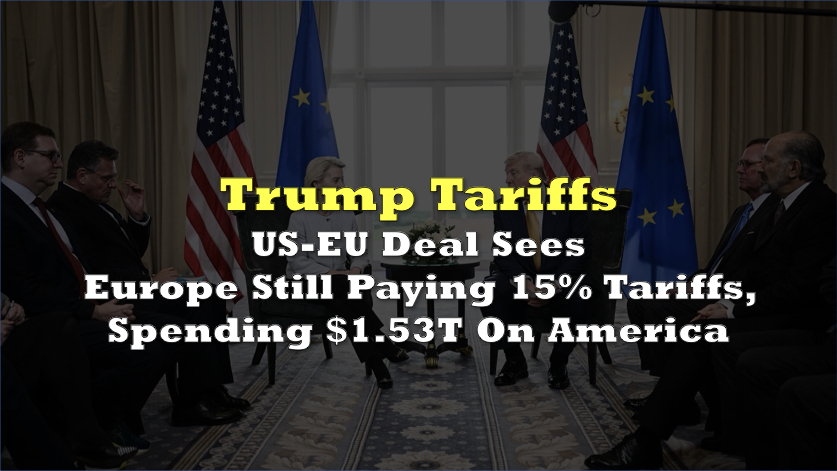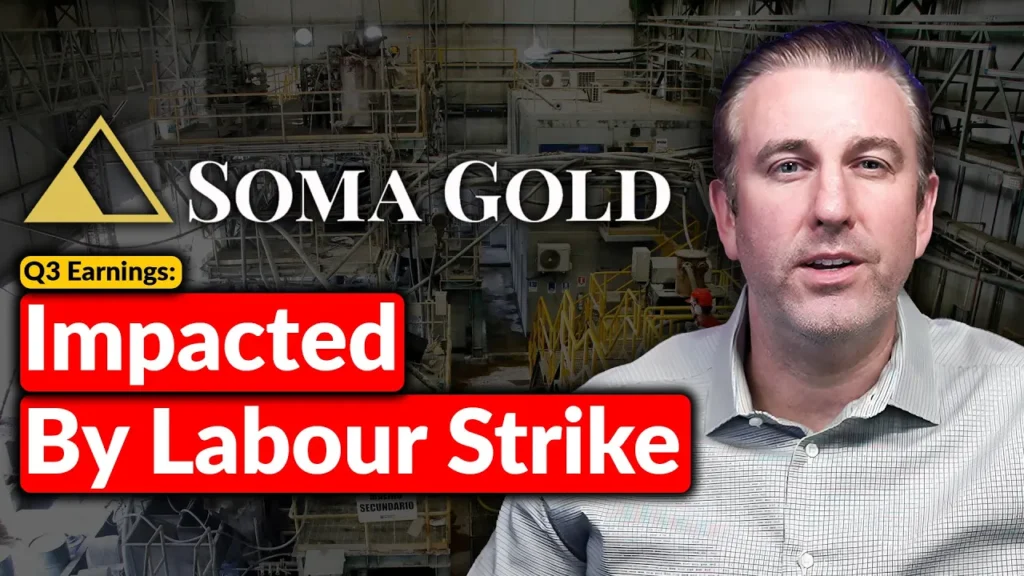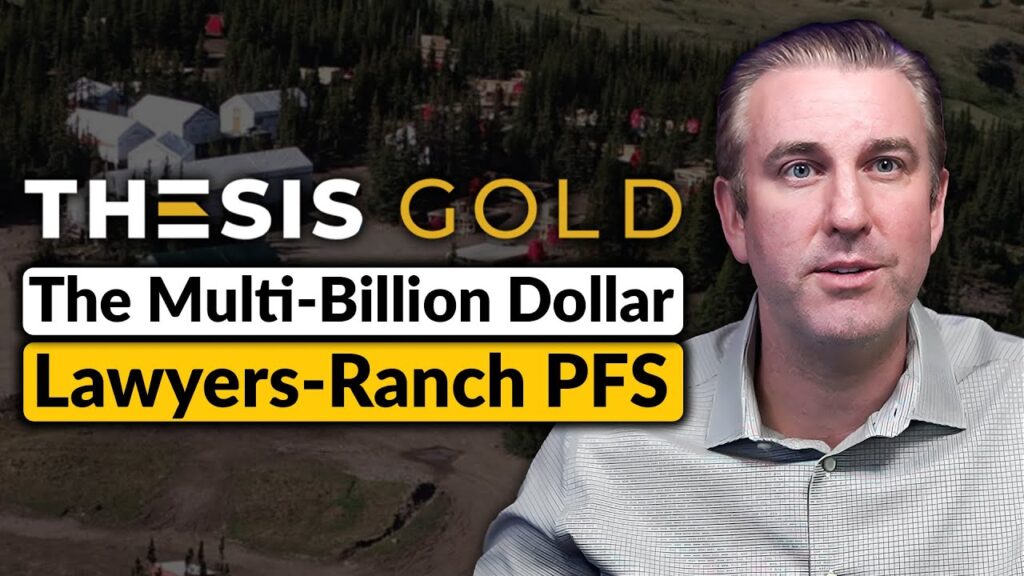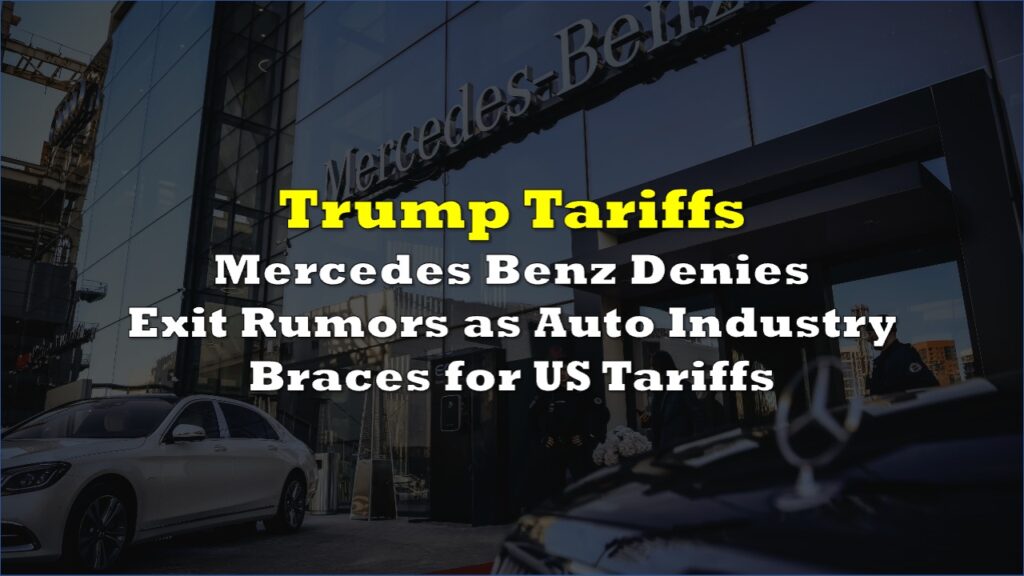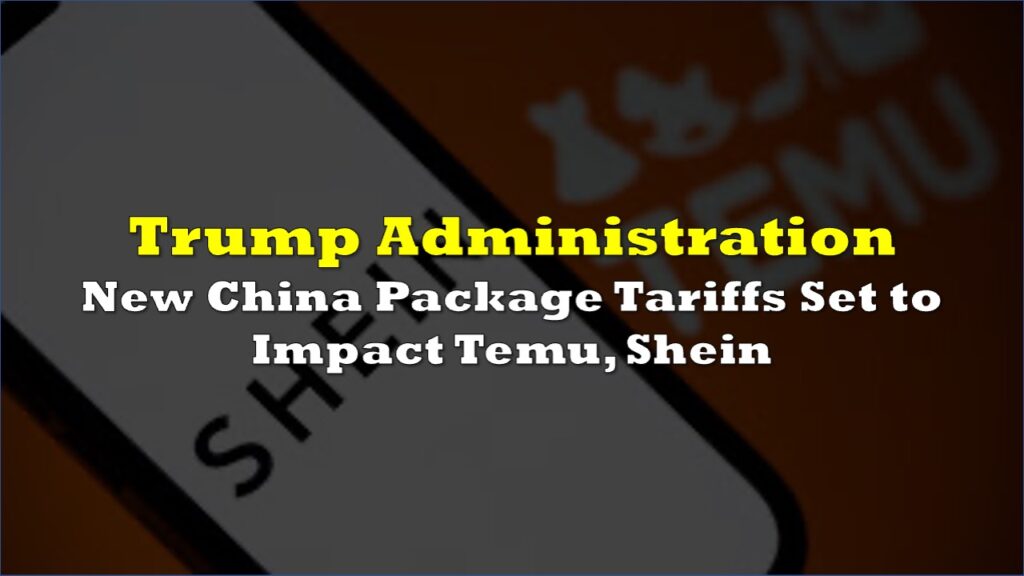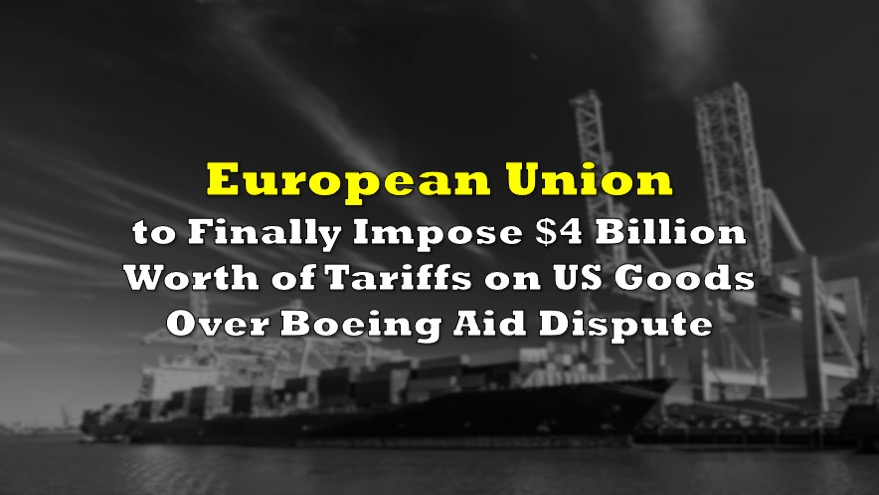Talks that began with a 30% US threat have ended with a still-punishing 15% blanket tariff on major European goods entering America, while the EU promises zero duties on select US exports plus an eye-watering US$1.35 trillion in fresh spending inside the US over the next three years. The deal, resulting from a marathon session at President Donald Trump’s Turnberry resort, is what both sides call a breakthrough just in time before the previously set August 1 deadline.
European Commission President Ursula von der Leyen labeled the accord “huge” after what she described as “tough negotiations.” Trump, putter still in hand after an 18-hole round, declared it “the largest trade deal in history” and said it would “bring us closer together.”
While the deal cuts in half the tariff Washington had threatened to impose on Friday, it still leaves in place a 50% duty on steel, aluminium and copper.
Trump has a trade deal with the EU, where Americans lose again. We will pay 15% tariffs to buy most European goods, but 50% tariffs to buy European steel, aluminum, or copper, driving up material costs for many U.S industries. Europeans won't pay any tariffs on most U.S. imports.
— Peter Schiff (@PeterSchiff) July 27, 2025
Fine print
Under the framework, the EU will channel about US$600 billion into new factories and infrastructure in the US and will purchase an additional US$750 billion of American liquefied natural gas, oil, and nuclear fuel. Von der Leyen argued that the energy pledge would shrink Europe’s reliance on Russian supplies, though energy analysts noted the target would require EU import volumes to triple almost overnight compared with 2024 levels.
“Von der Leyen confirmed the EU would seek to buy $250bn of US energy products each year for the next three years”
— Rory Johnston (@Rory_Johnston) July 27, 2025
In 2024, EU purchased <$100bn in US energy products (~60bn petroleum, ~$20bn LNG, etc)
Where the heck is the other $150bn+ coming from?
Massive implied flow shift
As a result of the deal, Brussels is accepting a 15% border tax that replaces an average goods duty of less than 2%, while some US products will now enter Europe duty-free. Key French and Dutch sectors such as spirits secure limited exemptions, but German electronics, Italian leather, and Spanish pharmaceuticals will all pay the new rate.
Boeing escapes duties on aircraft and parts, a direct hit to the European counterpart Airbus. The agreement also references “enhanced defence cooperation” which bodes well for US defence giants like Lockheed Martin that stand to gain from what White House aides claim as “hundreds of billions” in European arms orders.
If Europeans were paying attention (or being told the truth), they should be beyond appalled by this "deal": https://t.co/NlD6qhVu0V
— Arnaud Bertrand (@RnaudBertrand) July 27, 2025
It's nothing more than one of the most expensive imperial tributes in history. Just a massive one-way transfer of wealth with no reciprocal…
“Nothing to celebrate”
European reaction ranged from resigned to outraged. France’s Europe Minister Benjamin Haddad called the outcome “unbalanced,” while Irish Taoiseach Micheál Martin warned the higher levy would make trade “more expensive and more challenging.”
German Chancellor Friedrich Merz welcomed a pause in escalation but noted Germany’s export-heavy economy had “narrowly avoided a hard hit.”
Former Danish Trade Minister Rasmus Jarlov said the new tariff wall “will inevitably lead to inflation” on both sides of the Atlantic, so there’s “nothing to celebrate.”
There is nothing to celebrate. Moving from average tariffs of less than 2% on trade between the USA and Europe to 15% under today’s deal will inevitably lead to inflation. Almost everything will become more expensive in both Europe and the USA, and we will all be worse off. The…
— Rasmus Jarlov (@RasmusJarlov) July 27, 2025
Trump put the projected US tariff take at roughly US$90 billion a year, based on 2024 trade flows. That estimate assumes EU exports remain steady despite the cost shock, an assumption many analysts dispute. Trade flow models from the Peterson Institute and the Kiel Institute suggest a 10%–25% decline in EU shipments under a uniform 15% duty, which would push annual revenue closer to US$65-US$75 billion.
Trans-Atlantic trade in goods totaled about US$976 billion last year with the US import from Europe totaled US$606 billion and export ran up to US$370 billion. Services, where America runs a large surplus, were not part of the tariff bargain.
There’s two ways to read this:
— jacob l. shapiro (@JacobShap) July 27, 2025
1) Europe is fundamentally and existentially weak, it will be a battleground in a multipolar world rather than a pole.
2) Europe gets that the way to Trump’s heart is flattery and unrealistic promises that allow him a short term PR “win.” So make… https://t.co/sr3xjsiOTm
Von der Leyen said technical details will be hammered out “over the next weeks,” and ambassadors from the 27-nation bloc meet today for a debrief. Ratification is likely but not guaranteed: France wants full wine exemptions, the Netherlands is pushing for relief on beer, and several members insist on sunset clauses if Washington keeps the 50% metals duty.
Information for this briefing was found via BBC and the sources mentioned. The author has no securities or affiliations related to this organization. Not a recommendation to buy or sell. Always do additional research and consult a professional before purchasing a security. The author holds no licenses.

